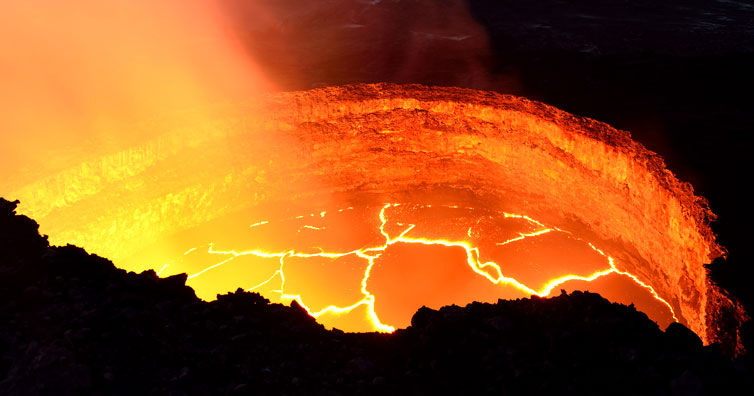The Kilauea volcano in Hawaii has been actively erupting since 1983, however, as of May 3rd, several new lava vents have opened up in the Puna area, downdrift from the summit. In addition to the molten rock and volcanic ash that are over 30,000 feet in the air from more than 20 fissures that have formed, it’s also emitting an ear-piercing screech. The bursts of rock and magma through the fissures are the likely cause of the sound.
Scientists have coined this screech that occurs during volcanic eruptions “harmonic tremor”. Researchers at Oregon State University have explained that the sounds are generated by the underground gases that force their way through tiny channels at an incredibly high pressure. In their article, they explain, “The high pressures associated with the gas-rich magma within these cracks, pipes, and conduits can cause the volume to resonate similarly to a pipe organ.”
This process can be compared to that of a toy whistle. When highly compressed air is forced through a narrow pipe, it creates a sound. The frequency of that sound is determined by the length of the whistle that it flows through. So, for example, the frequency (which is related to the pitch) will generally increase as the length of the whistle decreases. In the case of a volcano, the underground pipe (rather than whistle), is the channel through which the magma is attempting to burst through.
In 2013, researchers at the University of Washington published a study in the Journal of Volcanology and Geothermal Research which found that the high-pitch screech that’s heard during a volcanic eruption, is linked to the sound of quickly vibrating earthquakes. The following day after the Kilauea volcano began erupting, an earthquake with a magnitude of 6.9 unsettled the area. The paper explains that this is caused by the magma forcing its way through a narrow channel.
The closer the magma gets to the earth’s surface, the earthquakes gets smaller and the pressure increases. Once the magma comes close to breaking the surface, the earthquakes get so small and occur so quickly that they end up blending into one long continuous spasm.
In a statement given by lead author and postdoctoral fellow from the Volcano Science Center, Dr. Alicia Hotovec-Ellis, said, “Because there’s less time between each earthquake, there’s not enough time to build up enough pressure for a bigger one.” She added, “After the frequency glides up to a ridiculously high frequency, it pauses and then explodes.” If this continues to be, the screeching noise will only halt once the magma ceases its attempted passage through the fissures.
However, Janet Babb, the Hawaiian Volcano Observatory spokesperson noted at the beginning of this month, there is no telling when the Kilauea volcano will stop erupting. For instance, in the 1955 explosion, it didn’t halt its eruption for a staggering 88 days. However, as terrifying as the shrill screeching is, it has served as a useful tool in warning residents and nearby inhabitants allowing them time to evacuate the area.





